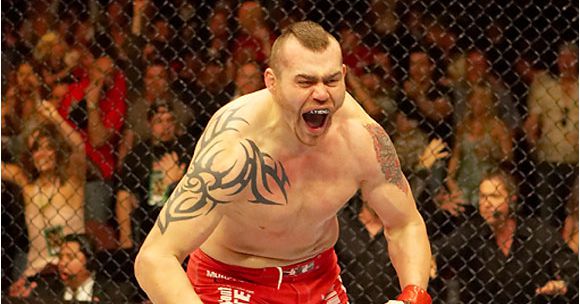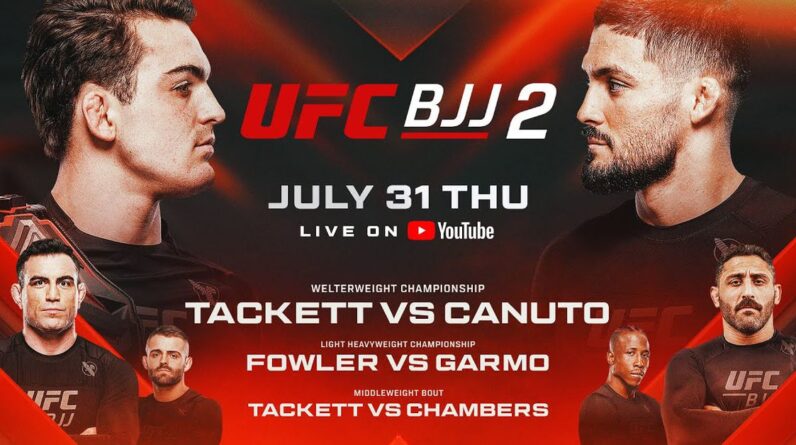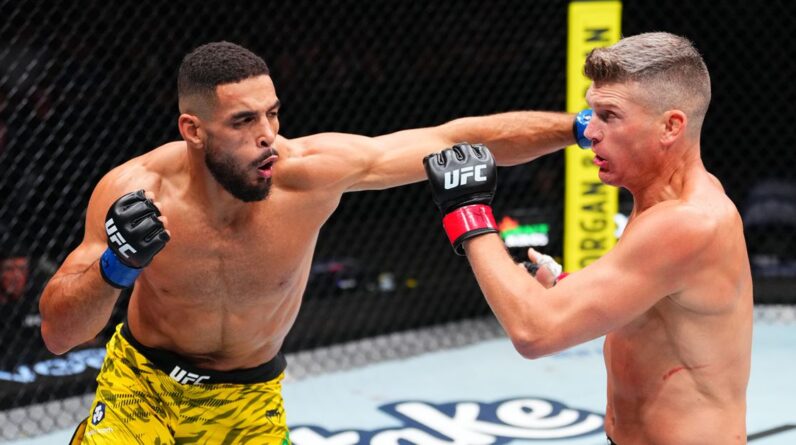In the high-octane world of mixed martial arts, where athletes routinely push the boundaries of physical endurance, the line between bravery and recklessness can often blur. It’s a realm where the smallest injuries can have outsized impacts, derailing careers and rewriting legacies. Recently, the spotlight turned onto MMA superstar Conor McGregor, who made headlines not for his usual octagon bravado but for an unexpected withdrawal from UFC 303. The cause? A seemingly trivial injury—a damaged pinky toe. While critics were quick to deride the decision, a seasoned doctor has stepped forward to illuminate why this seemingly minor affliction warranted a tactical retreat. In this article, we delve into the medical rationale behind the choice, offering a fresh perspective on an incident that stirred both the MMA community and McGregor’s legion of fans around the globe.
Table of Contents
The Science Behind the Pinky Toes Impact on Athletic Performance
The misunderstood pinky toe plays a surprisingly vital role in the mechanics of movement, especially in athletic performance. While it might seem minuscule, this small digit aids in balance and stability, acting as a pendulum that helps control lateral movements. Athletes like Conor McGregor rely heavily on the precision and agility offered by all their toes to switch stances, pivot swiftly, and maintain a strong base during fights. In many combat sports, the pinky toe endures consistent stress, reflecting in increased ground reaction forces. With an injured pinky toe, an athlete’s base can be compromised, causing uneven weight distribution and making them susceptible to further injuries. As such, a mere injury to this small toe could lead to critical athletic limitations.
The kinetic chain concept further elucidates why damage to something as seemingly minor as the pinky toe can warrant event pullouts from competitions like the UFC. In this interconnected system, a breakdown in one area can propagate elsewhere, affecting the entire body’s functionality. Athletes often experience changes in posture and gait with a pinky toe injury, which can lead to muscular imbalances and strain. This chain reaction can be articulated as follows:
| Component | Potential Impact |
|---|---|
| Pinky Toe | Altered balance/stability |
| Ankle | Improper alignment |
| Knee | Increased torque |
| Hips | Restricted mobility |
These cascading effects can impair performance and increase the risk of other injuries, validating strategic decisions by fighters to withdraw when the pinky toe is compromised.
Understanding the Medical Perspective on Fight Withdrawals
In the physically demanding world of mixed martial arts, injuries are as inevitable as they are impactful. A seemingly minor injury, like a pinky toe injury, can be deceptively significant, influencing not only performance but also future career prospects. Doctors often emphasize that fighters must prioritize long-term health over short-term goals, and Conor McGregor’s decision to withdraw from UFC 303 is a case in point. The kinetic chain—a series of interconnected joint movements—means that even a small injury can derail a fighter’s ability to execute complex maneuvers. Ignoring such an injury could risk further complications, like compensatory injuries to other parts of the body. Implementing comprehensive treatment plans that incorporate rest and rehabilitation helps mitigate these risks.
- Impact on Mobility: Affects footwork and pivoting.
- Pain Management: Can hamper focus and strategy execution.
- Rehabilitation Needs: Essential for full recovery and strategic training.
Moreover, event promoters like the UFC recognize the vital role that physicians play in maintaining the integrity and safety of the sport. When fights are scheduled, rigorous pre-fight medical examinations ensure fighters meet a certain threshold of physical readiness. This means that the involvement of medical professionals isn’t merely advisory; it’s fundamentally protective. In this context, it’s pertinent to consider the criteria that medical professionals use to evaluate a fighter’s readiness:
| Criteria | Considerations |
|---|---|
| Range of Motion | Ability to execute techniques without restriction |
| Pain Levels | Tolerability of movement during fight simulations |
| Recovery Timeline | Expected duration for returning to full fitness |
Given these considerations, a decision to withdraw, though disappointing for fans, is not only justified but crucial in preserving a fighter’s ability to compete at their best in future bouts. Proper handling of injuries upholds the integrity of the sport, ensuring that each fight is a showcase of skill, not survival against physical limits.
Conor McGregors Recovery Plan What Experts Recommend
In the wake of Conor McGregor’s recent injury, many experts have weighed in on the most effective recovery plan for the renowned UFC fighter. Sports medicine specialists emphasize the importance of balancing rest with rehabilitation to ensure a full recovery. Key components of his recovery regimen reportedly include:
- Physical Therapy: Focusing primarily on strengthening exercises for the foot and lower leg muscles.
- Cross-Training: Incorporating low-impact activities like swimming and cycling to maintain cardiovascular fitness without overstraining the injured area.
- Nutritional Support: Ensuring a high protein intake to support tissue repair and include anti-inflammatory foods like fish, nuts, and colorful fruits to aid in recovery.
Orthopedic experts suggest that managing the inflammation associated with such injuries requires a tailored plan. This usually involves a combination of lifestyle adjustments and medical interventions. They recommend a close monitoring of healing progress through routine check-ups and advanced imaging techniques. Here’s a basic outlook based on their feedback:
| Week | Activity | Goal |
|---|---|---|
| 1-2 | Rest & Immobilization | Minimize swelling and pain |
| 3-4 | Begin Light Movement | Restore mobility |
| 5-6 | Strength Training | Rebuild muscle |
Recognizing the need for both physical and mental resilience, Conor’s team might integrate psychological coaching to help navigate the challenges of an athlete’s recovery journey. Together, these components underscore a holistic approach to rehabilitation, a strategy designed to reinforce his return to form.
Balancing Health and Competition Why Strategic Decisions Matter
In the world of UFC, where toughness and resilience are the currencies of success, athletes often risk long-term health for immediate glory. However, the decision to pull out of a fight due to injuries, such as a pinky toe injury, exemplifies the crucial need for strategic thinking. Conor McGregor’s decision to prioritize his health over competing in UFC 303 is a testament to the wisdom of balancing professional aspirations with physical well-being. While a pinky toe might seem insignificant to the untrained eye, the ramifications of pushing through such an injury could range from impaired balance to the risk of a more severe injury. This decision draws attention to the importance of listening to medical advice and acknowledging one’s physical limitations, ensuring peak performance in future bouts.
To support superior decision-making in competitive sports, athletes and their teams often weigh a variety of factors:
- Physical Health: Ensuring that current injuries are managed effectively to prevent long-term damage.
- Career Longevity: Balancing short-term gains against the athlete’s long-term career prospects.
- Psychological Readiness: Addressing the mental impact of injury recovery to maintain confidence and competitive edge.
| Factor | Consideration |
|---|---|
| Physical Health | Preventing chronic issues |
| Career Longevity | Preserving athlete’s future |
| Psychological Readiness | Boosting mental agility |
Key Takeaways
As the octagon lights dim and the echoes of anticipation begin to fade, the narrative surrounding Conor McGregor’s unexpected withdrawal from UFC 303 finds its place in the annals of sports history. The decision, illuminated by the expert insights of our esteemed doctor, underscores the intricate balance between warrior spirit and physical limitation—a balance every athlete must reckon with.
In examining McGregor’s journey through the prism of his pinky toe injury, we are reminded that elite fighters, though seemingly invincible, are not exempt from the vulnerabilities that bind us all. This episode reinforces the notion that true courage sometimes resides not in the act of fighting, but in the wisdom to recognize when to step back.
As fans and fellow fighters process this news, the focus turns to healing and resilience. McGregor’s story serves as a testament to the complex realities of athletic prowess, where victory is not always defined by crossing a finish line, but by the discernment in choosing one’s battles wisely. As the UFC world pauses to reflect on what may have been, the promise of future confrontations and the hope for McGregor’s swift recovery linger in the air, paving the way for a comeback that will surely be watched with bated breath.






